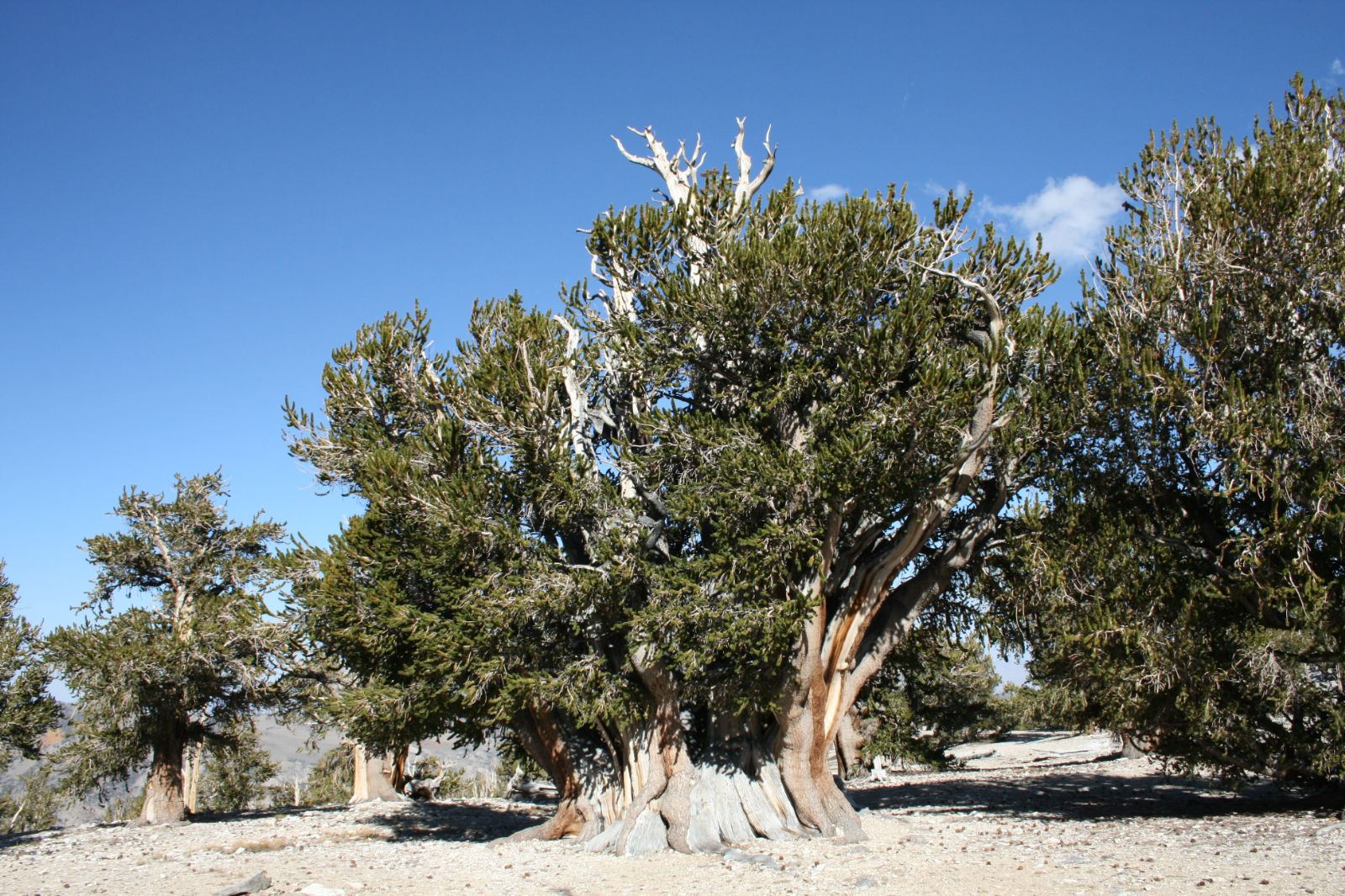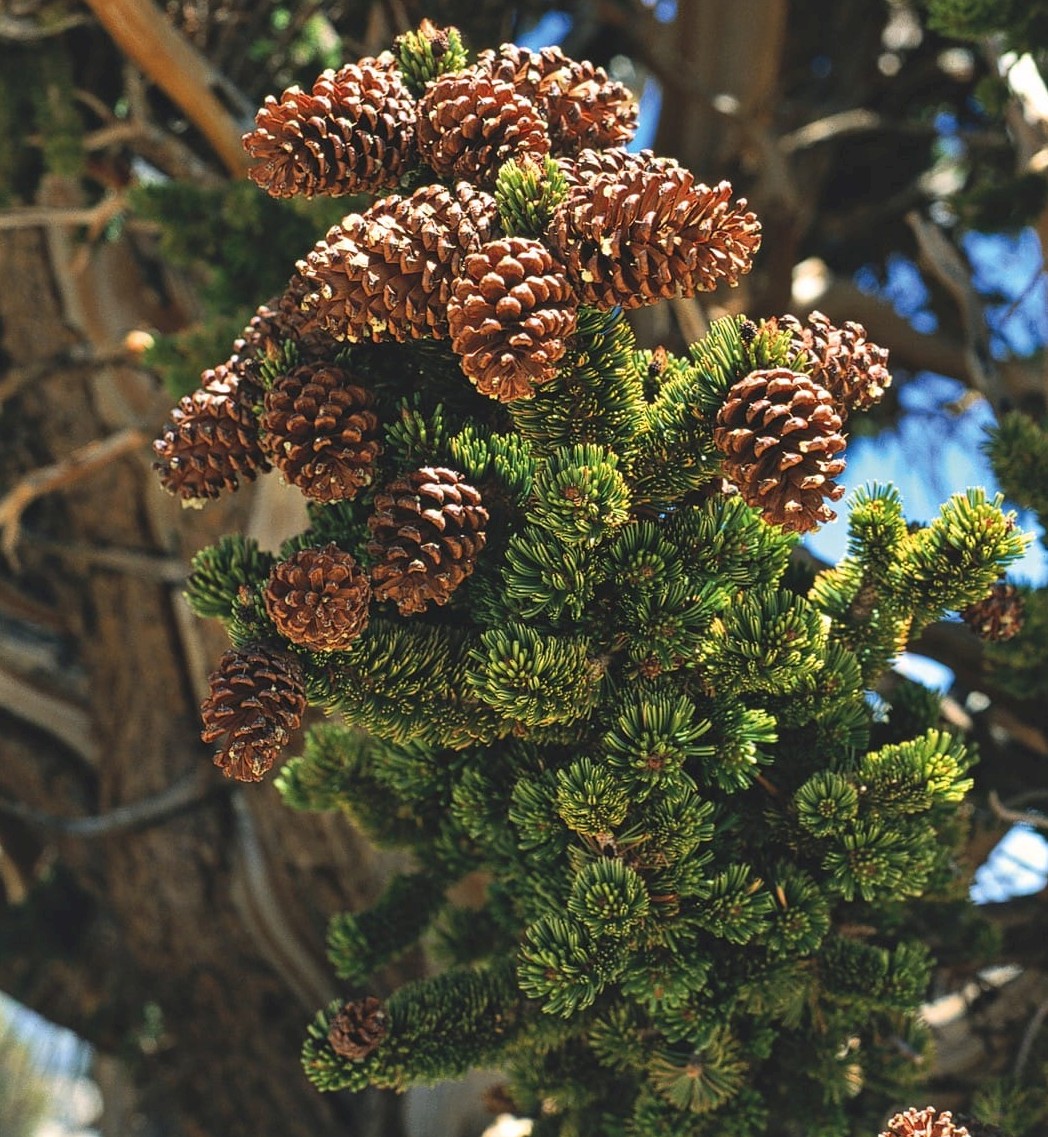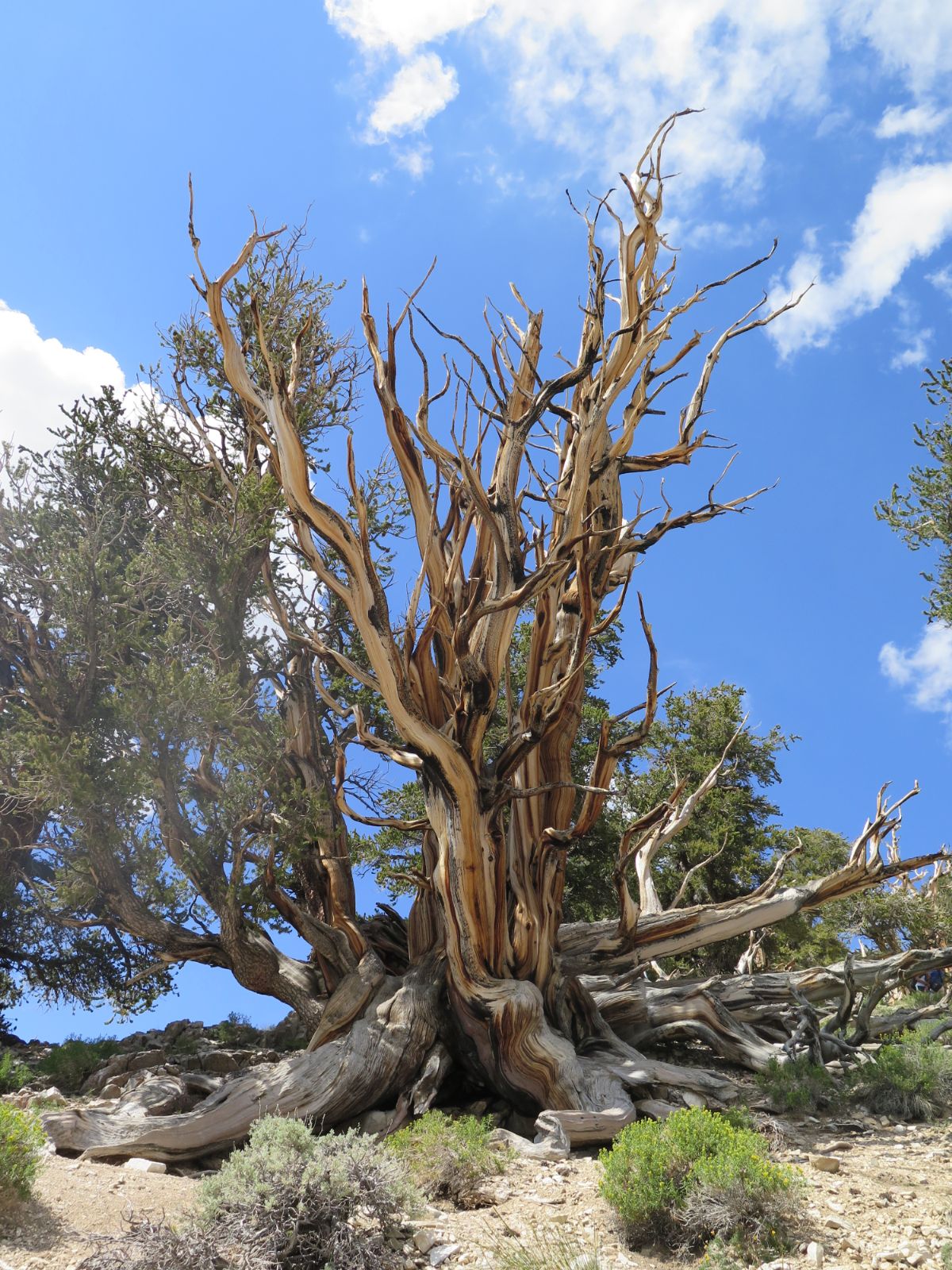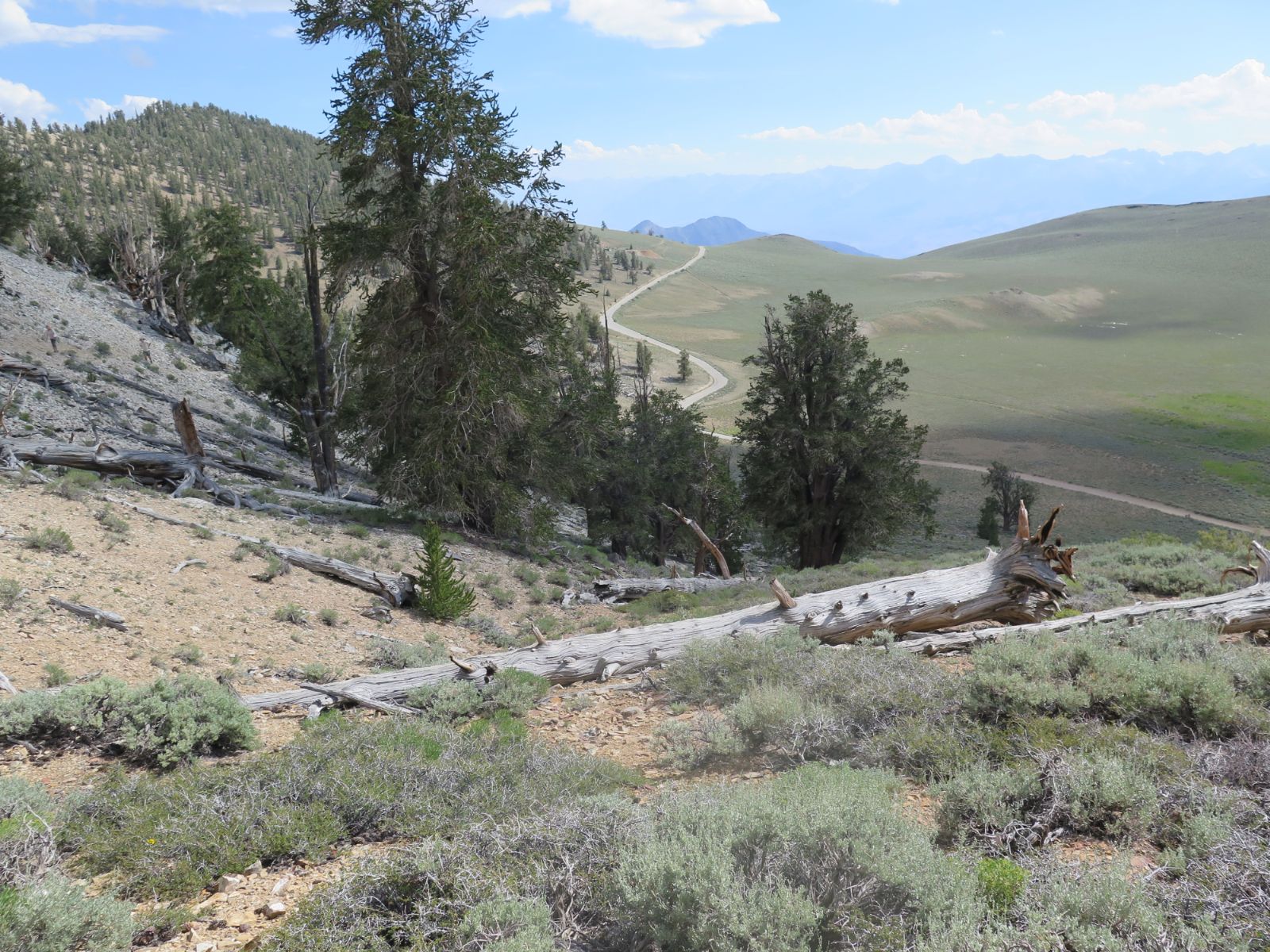Pinus longaeva
Credits
Article from New Trees by John Grimshaw & Ross Bayton
Recommended citation
'Pinus longaeva' from the website Trees and Shrubs Online (treesandshrubsonline.
Genus
- Pinus
- Subgen. Strobus, Sect. Parrya
Common Names
- Great Basin Pine
- Intermountain Bristlecone Pine
Other taxa in genus
- Pinus albicaulis
- Pinus arizonica
- Pinus armandii
- Pinus attenuata
- Pinus ayacahuite
- Pinus balfouriana
- Pinus banksiana
- Pinus bhutanica
- Pinus brutia
- Pinus bungeana
- Pinus canariensis
- Pinus cembra
- Pinus cembroides
- Pinus chiapensis
- Pinus contorta
- Pinus coulteri
- Pinus culminicola
- Pinus densata
- Pinus densiflora
- Pinus devoniana
- Pinus durangensis
- Pinus echinata
- Pinus edulis
- Pinus elliottii
- Pinus engelmannii
- Pinus eremitana
- Pinus flexilis
- Pinus gerardiana
- Pinus greggii
- Pinus × hakkodensis
- Pinus halepensis
- Pinus hartwegii
- Pinus heldreichii
- Pinus henryi
- Pinus × holfordiana
- Pinus hwangshanensis
- Pinus jeffreyi
- Pinus johannis
- Pinus koraiensis
- Pinus lambertiana
- Pinus leiophylla
- Pinus massoniana
- Pinus maximartinezii
- Pinus monophylla
- Pinus montezumae
- Pinus monticola
- Pinus morrisonicola
- Pinus mugo
- Pinus muricata
- Pinus nelsonii
- Pinus nigra
- Pinus oocarpa
- Pinus orizabensis
- Pinus palustris
- Pinus parviflora
- Pinus patula
- Pinus peuce
- Pinus pinaster
- Pinus pinceana
- Pinus pinea
- Pinus ponderosa
- Pinus pseudostrobus
- Pinus pumila
- Pinus pungens
- Pinus quadrifolia
- Pinus radiata
- Pinus remota
- Pinus resinosa
- Pinus rigida
- Pinus roxburghii
- Pinus sabiniana
- Pinus serotina
- Pinus sibirica
- Pinus strobiformis
- Pinus strobus
- Pinus sylvestris
- Pinus tabuliformis
- Pinus taeda
- Pinus taiwanensis
- Pinus teocote
- Pinus thunbergii
- Pinus torreyana
- Pinus virginiana
- Pinus wallichiana
- Pinus wangii
- Pinus yunnanensis
Tree to 18 m, trunk erect, strongly tapered, 0.3–0.6 m dbh, though mature trees in their natural habitat have massive gnarled and largely dead trunks up to 3.5 m dbh, with only small living parts remaining. Bark scaly, grooved and yellow or russet. Crown open and irregular; cultivated specimens are relatively fast-growing with a conical crown. Branchlets reddish brown to grey, hairy; vegetative buds not resinous. Leaves in fascicles of five (rarely three or four), persisting for 10–30 years in habitat, fascicles held closely together, arranged on branches like a bottlebrush, shiny greyish or yellowish green, straight, triangular in cross-section, 2.5–3.5 × 0.05 cm (to 5 cm long in cultivation), with two external, longitudinal resin ducts, resin droplets absent, apex acute. Fascicle sheaths peeling backwards, then mostly deciduous but the basal scales persisting. Cataphylls to 0.8 cm long, reddish brown to dark brown. Male strobili orange-brown, ovoid, 1–1.2 cm. Female cones subterminal, solitary or in pairs, sessile or short-pedunculate, 6–12 cm long, purple to rusty reddish brown, taking about 16 months to mature; mature cones ovoid with reddish resin deposits. Scales 100–140, opening at maturity; scales thick, soft, reddish brown; apophysis raised, rhombic, reddish brown; umbo dorsal, with a short, slender prickle. Seeds 0.5 cm long; seed wings effective, 1 cm long. Bailey 1970, Thieret 1993, Farjon 2005a. Distribution USA: eastern California, southern Nevada, Utah. Habitat Dry, rocky ridges or slopes between 1700 and 3400 m asl. Pinus longaeva is intolerant of shade. Harsh environmental conditions of its natural habitat cause it to grow very slowly, such that individuals of this species are among the oldest trees in the world, some aged up to 5000 years. USDA Hardiness Zone 4–5. Conservation status Vulnerable. Illustration Farjon 2005a; NT607. Cross-reference S373. Taxonomic note Pinus longaeva is one of the three ‘foxtail’ pines (together with P. aristata and P. balfouriana), and was described relatively recently after investigation of this group by Bailey (1970).
One of the great dendrological experiences is to make the journey up the White Mountains in the Inyo National Forest of eastern California to see Pinus longaeva in its natural habitat. Here, in the bright light of these rather barren mountains, are the scattered stands of trees that contain some of the oldest living organisms on Earth. Their gnarled trunks, often seeming more dead than alive, and polished by exposure, are a photographer’s dream. (In the search for images for this book there were more submissions for P. longaeva than for any other species except Wollemia nobilis.) In these high dry mountains the growth rate of P. longaeva is exceedingly slow, adding a few centimetres each year at most, but in cultivation it grows more rapidly. A tree dating from 1972 at Kew is now 3.5 m tall, but does not look very happy as it is somewhat shaded, and shade is also a problem with specimens growing at Edinburgh from Bailey’s collection in the early 1970s. Considerably better-looking is one on the Rock Garden at Edinburgh grown from Paterson & Clarke 123, collected in 1991, which has a much denser, more compact appearance, more characteristic of the species in the wild; even in this case, however, new growth was 10–12 cm in 2005. It is clear that maximum light is required for the species to prosper, and probably rather lean soil also, but it is well established in cultivation, and in favoured sites may go on to form a respectable tree. It has no white resin flecks in its foliage – a very conspicuous feature in its close relative P. aristata and a useful identification character.
Its other close relative, P. balfouriana, has long been established in cultivation (see Bean and Krüssmann: B213, S373, K210). Most if not all of the specimens in the United Kingdom, including the two well-known individuals at Edinburgh, and a probably contemporary but slightly larger tree in Stocksfield, Northumberland (the largest in Britain, 17 m tall and 45 cm dbh in 2007: M. Frankis, pers. comm. 2007), are of the recently described subspecies P. balfouriana subsp. austrina R. Mastrog. & J. Mastrog., from the southern Sierra Nevada. This is distinguished by smaller cones with smaller, thicker scales, and (in very old trees) orange rather than dark grey bark. Typical P. balfouriana subsp. balfouriana, from the Klamath mountains, may not be in cultivation in Britain at present, other than as young plants (M. Frankis, pers. comm. 2007).






